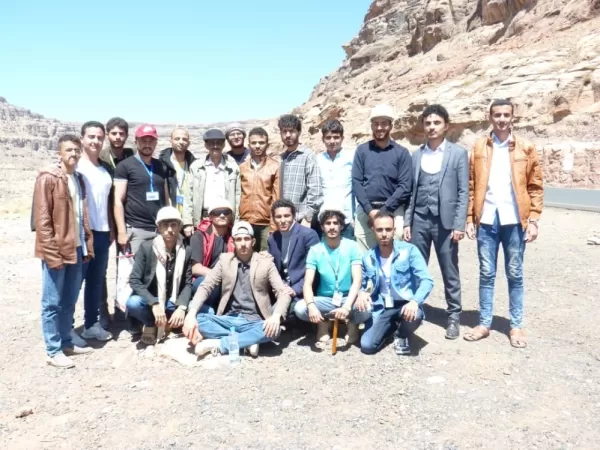Emirates International University
Modernity
Distinguish

University media
The Department of Oil and Gas Engineering at the College of Engineering and Information Technology at the university organized a scientific visit for first and second level students to a number of regions, including Shibam Kawkaban, Shamlan and Hamedan, for the purpose of learning about the geology of Yemen, under the supervision of Dr. Mahyoub Abdul Rahman, Engineer Muhammad Osama and Engineer Irfan Al-Zari. The trip aimed to get acquainted with the geology of Yemen and the geological column of the Republic of Yemen, especially the study of "the formation of the Tawila Sandstone Group", as well as the study of Yemen's volcanic rocks during the two times "the Triangular and the Quaternary eras." The visit included four stations: The first station: Shamlan and Hamdan, and in this station, each form of volcanicity resulting from Tri-Era volcanoes was seen in the form of terraces resulting from the processes of weathering and erosion. The second stop: Shibam Kawkaban A visit to Shibam Kawkaban represents the main objective of which is to study the formations of the Tawila Sandstone group that was formed in the Jurassic period - the middle period known as the Mesozoic Era and to study the tendencies of the detectors in Shibam as well as to study the main reason for making the city of Kawkaban higher than Shibam and that Because of the occurrence of an upward displacement resulting from a natural fault, which consists of the building movements of the mountains or what is known as the movements of the tectonic plates, the degree of inclination of the layer was approximately 17 degrees using the Brunton compass in measuring the slopes of the layer. The third stop: the ancient city of Kawkaban. It was a semi-inspection visit in which the features of the ancient historical city were visited and seen. The fourth station: Kawkaban Majz and Al-Hajr. During this station, the Majz formation was studied, which is 120 meters thick in the northeast of Sana’a, and consists of two units, a bottom unit consisting of sandy soil rich in iron oxide deposits or what is scientifically known as hematite, which forms the red color for most of the soil and a component unit The upper "lame Member" represented by a member very rich in lime, or what is known as the limestone rich in fossils.
